Once viewed as the steady guardian of the Constitution, the U.S. Supreme Court is now facing a sharp decline in public trust. Recent polls show that a growing number of Americans across political, regional, and demographic lines view the Court unfavorably.
This trend represents a dramatic shift in how the public perceives the judiciary, historically seen as the branch of government least tainted by partisanship. But in today’s polarized climate, the Court has become a lightning rod for political battles, leaving citizens questioning its impartiality and legitimacy.
The Numbers Behind Public Perception
According to surveys conducted over the past year, only around 40% of Americans currently approve of the Court’s performance, compared with more than 60% just a decade ago.
- Partisan Divide: Republicans remain somewhat more favorable toward the Court following recent conservative-leaning rulings, while Democrats show historically low levels of trust.
- Independents: Perhaps most troubling for the Court, independents — often considered the bellwether of American opinion — are increasingly skeptical, with approval ratings below 35%.
- Regional Trends: Polling data reveals that residents of coastal states, particularly in the Northeast and West, report significantly lower confidence than those in the Midwest and parts of the South.
For context, a Gallup survey noted that trust in the Court is now at its lowest point in nearly 50 years, underscoring just how unprecedented the current situation is (Gallup).
Historical Comparisons
The Court’s reputation has fluctuated before, particularly during periods of national turmoil.
- 1960s–1970s: Landmark rulings on civil rights and Vietnam-era protests divided public opinion, though trust generally rebounded.
- 2000 Presidential Election: The Bush v. Gore decision sharply polarized perceptions, but the Court’s approval recovered within a few years.
- Today’s Era: Unlike earlier controversies, current disapproval appears more entrenched, fueled by perceptions of ideological imbalance and lifetime appointments that seem increasingly political.
In other words, while public opinion has dipped in the past, the current decline is steeper, more sustained, and tied directly to the Court’s perceived alignment with partisan agendas.
Key Drivers of Negative Perception
- Contentious Decisions
Recent rulings on abortion rights, gun control, and environmental regulation have become deeply polarizing. For many Americans, these decisions feel less like neutral interpretations of the Constitution and more like partisan victories or defeats. - Appointment Battles
The highly politicized confirmation processes of the past decade — especially the heated debates surrounding Justices Brett Kavanaugh and Amy Coney Barrett — have left a lasting impression on the public that the Court is an extension of party politics. - Ethics Concerns
Reports of justices receiving undisclosed gifts and travel arrangements from wealthy donors have further eroded confidence. Critics argue that these revelations cast doubt on judicial independence. - Regional and Demographic Differences
Younger Americans, urban residents, and college-educated voters are significantly less trusting of the Court compared to older, rural populations. This generational divide suggests that distrust could deepen in the years ahead.
Regional Patterns in Public Opinion
Public perception of the Court is not uniform across the nation.
- Northeast & West Coast: Confidence is particularly low in states such as California, New York, and Massachusetts, where liberal policies often clash with recent conservative rulings.
- Midwest & South: States such as Ohio, Texas, and Georgia show stronger approval, though even here, disapproval has ticked upward in the last two years.
- Swing States: In states like Pennsylvania, Arizona, and Wisconsin, public trust is sharply divided, reflecting broader political polarization.
These regional divides are especially significant heading into the 2026 midterms, where Supreme Court decisions will undoubtedly be used as campaign talking points.
The Stakes for Democracy
Declining trust in the Court is more than a matter of public opinion — it poses serious implications for the stability of American democracy.
- Erosion of Legitimacy: If a critical mass of citizens no longer views the Court as legitimate, its rulings may lose moral authority even if they carry legal weight.
- Potential for Civil Disobedience: History shows that when citizens reject the legitimacy of judicial decisions, compliance becomes fragile, risking widespread defiance.
- Impact on Other Institutions: Distrust in the judiciary often spills over into broader skepticism of government as a whole, fueling disengagement and populist backlash.
As the Pew Research Center has highlighted, trust in U.S. institutions is already at historic lows, and the Court’s decline adds another layer of instability (Pew Research).
Looking Ahead
Can the Supreme Court restore its image? Experts suggest a few possibilities:
- Transparency and Ethics Reforms: Stronger disclosure rules and clearer ethics codes could help rebuild confidence.
- Balanced Rulings: Decisions that avoid partisan extremes may gradually shift public opinion back toward neutrality.
- Generational Change: Over time, the Court’s makeup will inevitably shift, potentially altering how it is perceived by future Americans.
Yet, given the entrenched polarization in U.S. politics, recovery may be difficult. The Court now faces not only scrutiny over its decisions but also questions about its very role in American democracy.
Conclusion
The Supreme Court’s reputation as the impartial arbiter of the Constitution is under unprecedented strain. With polls showing record-low approval, regional divides widening, and partisan skepticism deepening, the Court’s future legitimacy is far from guaranteed.
Whether through reforms, generational shifts, or a renewed commitment to judicial independence, the path forward will determine not just the Court’s credibility but also the resilience of American democracy itself.




